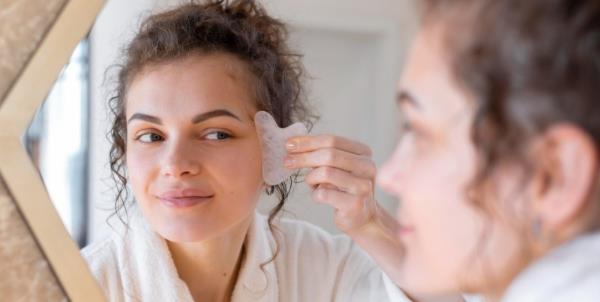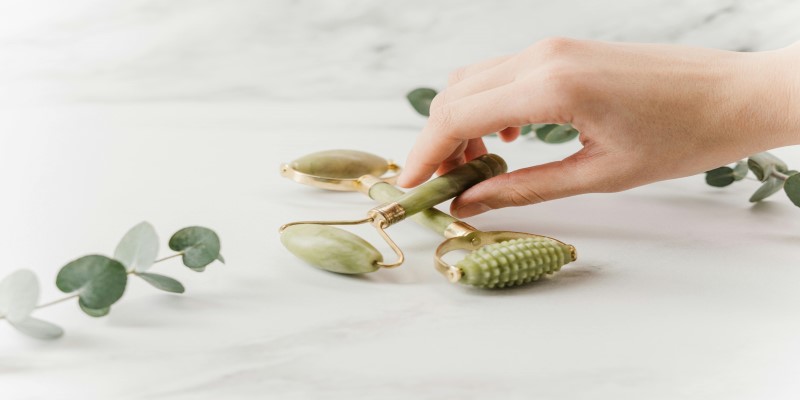Is the recent upcrop of Rosacea causing you irritation? No amount of meds prescribed by your dermatologist are helping? Retinol is your answer if you don't have easily irritable skin. It is an easy solution for your Rosacea problems as the medication is a topical skin care solution. Furthermore, it is natural and Vitamin A-based.
So, let's discuss the benefits of Retinol for Rosacea and the essential rules you must follow. After following these skin care tips, you will also realize how good a combination of Retinol and Rosacea is.
What is Rosacea?
Rosacea is a skin disorder that is, though noncontagious, still inflammatory. This disorder can easily cause skin breakouts and, in some cases, uneven textures. Generally, you will feel warmth in your skin and a bit of irritation when it starts. It can later cause slight discoloration as well.
For lighter skin, the discoloration is a slight redness on your skin, while in the case of darker skin tones, it can cause dusky brown discoloration. Some of its symptoms will let you know that it is Rosacea, such as:
- Bumpy and uneven textures.
- A mix of dry and swollen skin.
- You will see spider veins, or your blood vessels will be visible.
- Breakouts that will seem to be acne breakouts.
Is Retinol Good for Rosacea?
Yes, especially if the cream doesn't irritate your skin. The primary reason why most patients of Rosacea find comfort in this remedy is that Retinol can enhance collagen production. This, in turn, will increase cell turnover and help your skin to remove this discoloration. Furthermore, as the remedy is based on Vitamin-based derivates, you get better skin because of the considerable cell turnover. Following are some of the Pros and Cons of Retinol for Rosacea.
Pros of Retinol for Rosacea
- Retinol is quite popular when it comes to its anti-aging benefits, owing this benefit to the increase in collagen production.
- It reduces fine lines in different age demographics.
- Retinol helps to thicken your skin.
Cons of Retinol for Rosacea
- Causes irritation to sensitive skin.
- It may also cause dryness if you don't regularly apply lotion.

How Often Can You Use Retinol for Rosacea?
Always start with light usage after you consult your doctor, and even go for the 1-2-3 rule. This rule states that:
- For the first week, apply only once.
- For the next two weeks, use Retinol twice a week.
- For the next three weeks, apply Retinol three times a week.
- Following the last three weeks, if you don't have any side effects, start using every other night.
- If you feel any redness or flaking, reduce the frequency to 3rd rule and try again every other night.
Retinol for Rosacea – 3 Essential Steps to Follow
The answer to whether it is Retinol good for Rosacea is a yes, but under the three following conditions:
Use Retinol and Rosacea with Caution
Every topical medication you use will depend on your skin's health and chemistry. It may react to you differently than when promoted. So always be slow and gentle when you start using Retinol for Rosacea. The main reason is to observe whether your skin takes a liking or irritates it more than you can handle.
Most individuals with Rosacea already have irritated or sensitive skin, so caution is advised as it may cause more inflammation. In some cases, it can also cause redness of the skin, which may sting. The prime cause is the higher skin cell turnover from collagen production, which unclogs your pores.
When your pores are unclogged, you must remember that your skin barrier is currently disrupted. Your skin is more prone to flares as it is also famous for causing dryness, so start with low application and increase when your skin accepts.
Type of Rosacea Dictates Retinol Use
There are four types of Rosacea, which are as follows
Erythematotelangiectatic Rosacea – When you have persistent redness, you have this kind. Doctors also characterize it by showing flushing and a bit of increasing visibility of blood vessels.
Papulopustular Rosacea – In this case, the persistent redness is coupled with transient papules. The transient papules are often followed by pustules, bumps, and pimples in the common tongue.
Phymatous Rosacea – This kind will show thickening of your skin as a symptom and might also cause nose enlargement due to increased tissue on your nose.
Ocular Rosacea – You will get dry eyes or swollen eyelids, which might cause reduced vision due to the swelling or corneal damage.
Doctors and dermatologists recommend using Retinol for Rosacea for the first two types and not for the last two. The first two have acceptable usage for Retinol because it is known more for its anti-inflammatory properties and can reduce redness or acne on your skin.

Apt Consideration for Your Skin Barrier
As mentioned above, it is recommended to use Retinol once your skin barrier is restored, so giving it proper time before application is necessary. You can also use softer formulae of Retinol to allow your skin barrier to rejuvenate while Retinol works its magic. Most doctors recommend using ceramides as ingredients in your topical remedies to support that.
Final Words
Regarding using Retinol, if you have Rosacea, we mentioned some essential rules in this article. So, no matter what you do, don't ignore any side effects and consult regularly with your dermatologist. The 1-2-3 rule might take a long time, but it is your skin, and you need time to recover.
Furthermore, you should avoid applying it during the day as it may irritate due to sunlight. Finally, eat healthy food to give your body enough nutrition to help the healing process.







